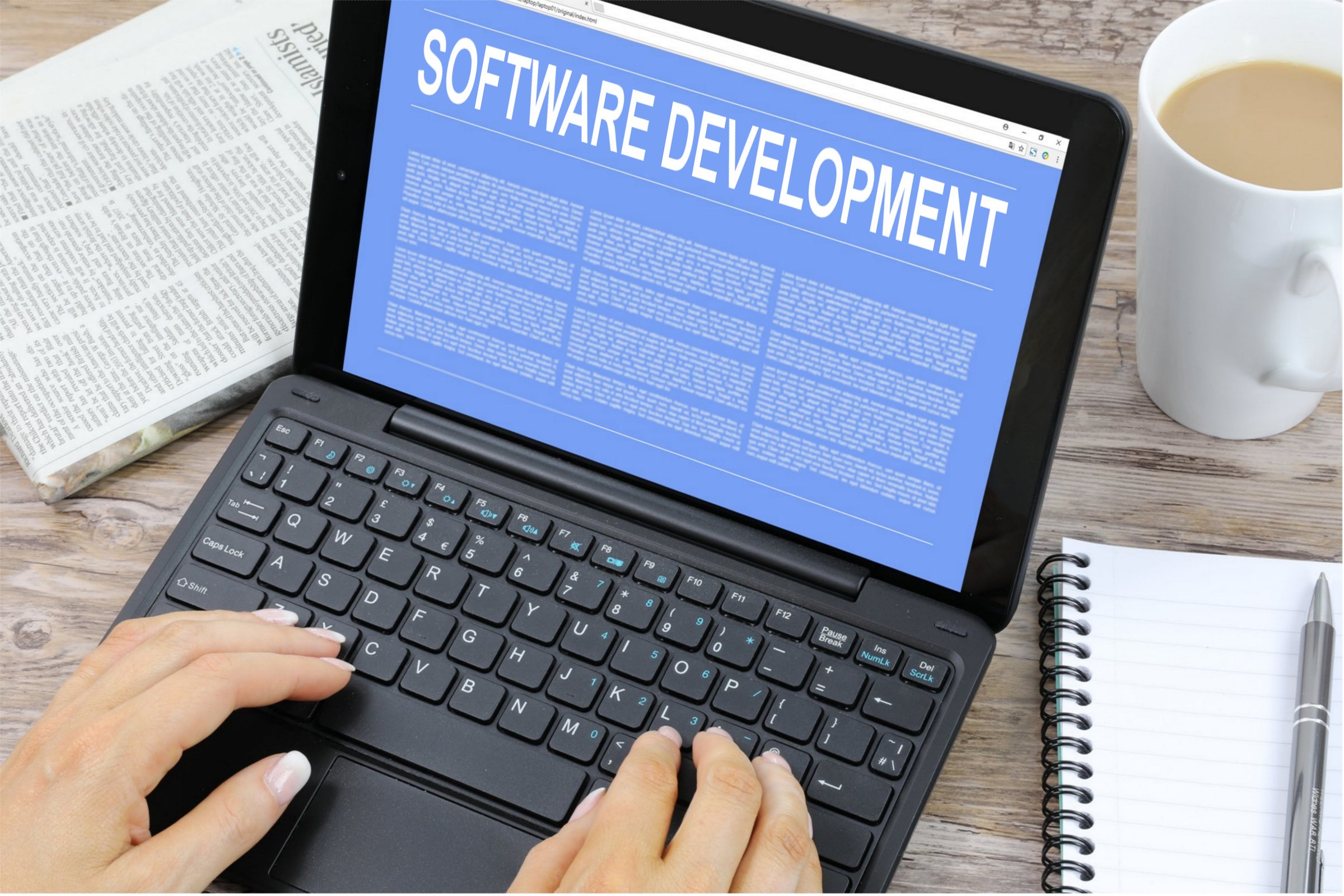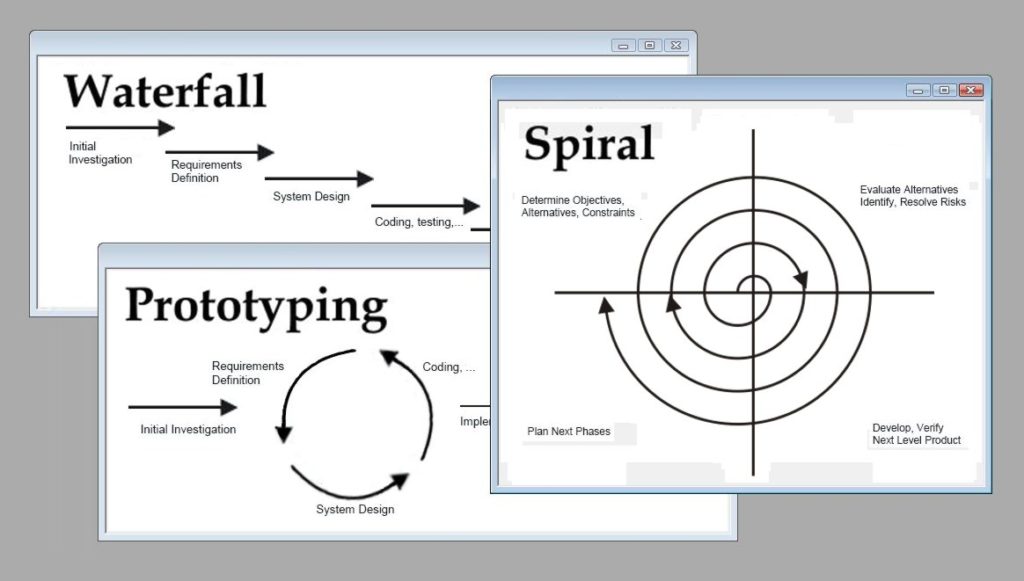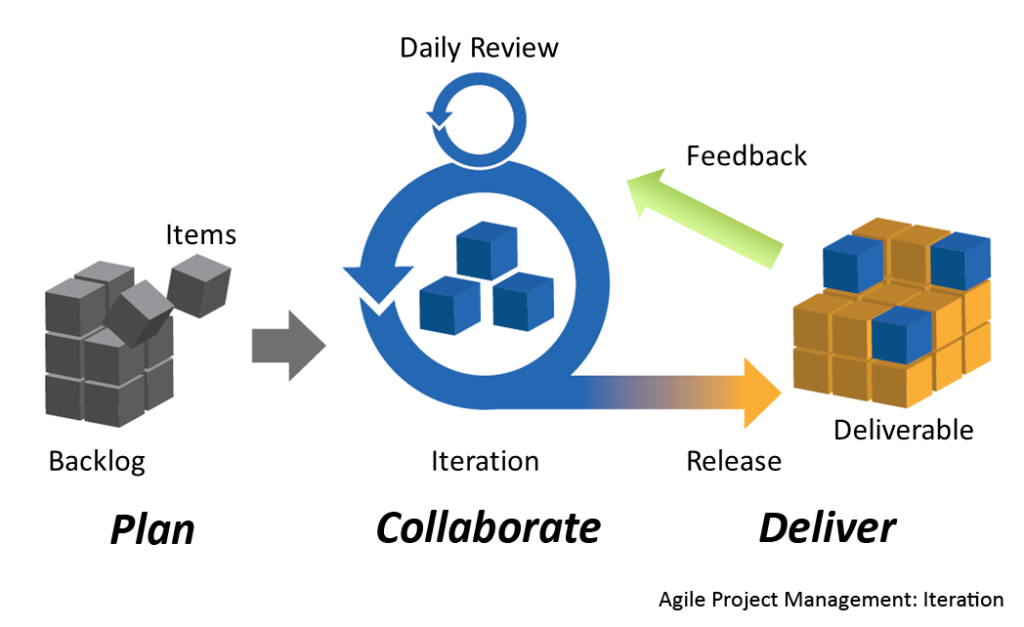
Methodologies for software application development have evolved greatly over time. Most of these methodologies have become obsolete and irrelevant. At Symphony Software, we use dominant SDLC frameworks, including Agile and DevOps to ensure that the final product fits end users .
Whether you’re a software development company or someone who needs customized software, it’s worth looking at SDLC methodologies chronically.
Here we go:
Old SDLC Methodologies

1. Waterfall – The First SDLC Methodology (the 1970s to 90s)
This linear-sequential model goes through all SDLC phases without overlapping. The next phase can begin only if the previous one is complete. This method tended to be lengthy and costly. So, technology leaders started seeking more flexible alternatives.
2. Prototyping Model
This software engineer method involves creating low-cost prototypes. Prospective users use the prototype and provide early feedback to project managers. Accordingly, prototypes are converted into the final product as per the client’s requirements.
3. Iterative Model
An early precursor to Agile, the iterative model involves a development team creating the first version of the software based on initial requirements. Then, more iterations are created as additional requirements are identified. Each iteration goes through all SDLC phases, and cycles are repeated until completion.
4. Spiral Model
This model involves identifying risks before recommending an approach that combines different SDLC methodologies, including Waterfall and Iterative. The one-size-fits-all approach doesn’t work here.
5. V-Shaped Model
Similar to the waterfall model, the next stage in the V-shaped framework begins only when the previous one is finished. However, it stands unique in that testing takes place at every development stage. So. software testers verify whether every requirement has been met and validate the system for users and stakeholders.
Modern SDLC Methodologies
6. Lean Model
The Lean model for software development focuses on eliminating waste, making decisions as late as possible, and delivering results faster. Teams work to find ways to reduce waste at every step. At its core, the model empowers the entire project team in decision-making.
7. Agile Model

The agile model combines an incremental and iterative approach. Involved teams release, test, and improve the software at each iteration. Surprisingly, the agile model encourages fast failure because developers believe that failing fast and early helps discover minor issues before they turn major.
8. Scrum Model
The Scrum model is a popular Agile framework that emphasizes close and continuous collaboration. It involves special development cycles known as Sprints.
A Scrum Master manages and improves all processes and helps teams abide by Agile values for maximized productivity. Scrum Masters also ensure that the whole process and progress are transparent to concerned stakeholders.
9. DevOps
DevOps is basically a hybrid of lean and agile. In this model, both developers and operation teams collaborate to speed up and innovate the software development process. Moreover, it involves continuous feedback, improvements, and the automation of manual processes.
Which one is the best?
Of course, modern SDLC methodologies have added advantages. But to make an informed decision, it’s important to dig deeper into these models. So, don’t forget to read our next blog, “What is Waterfall and its pros & cons.”
Got a project idea? You can discuss with us to decide which model can best fit your idea. Please contact us at info@symphony-software.com or 414-218-4644.
